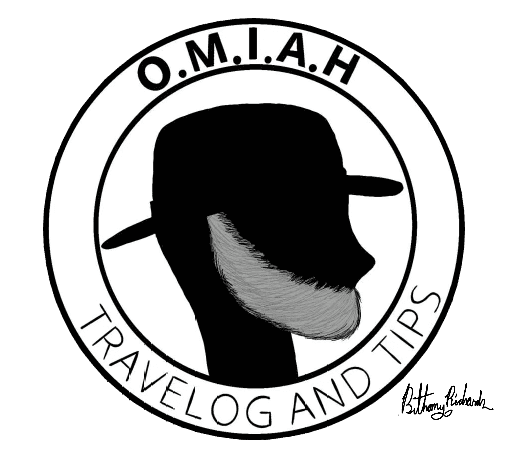On my recent trip to Germany to attend that little Bavarian beer sampling session known as Oktoberfest, I added a few days to visit some other cities in Germany. Let me share some of the experiences from the capital city of Berlin
A quick shot of history.
Berlin was first established in the 13th Century. Today Berlin is the largest city, with a population of 3.6 million, is its own federal state, and is the capital city of the unified Germany. Prior to 1990, Berlin was split, and East Berlin was the capital of East Germany while the former Bundesrepublik capital sat in the city of Bonn.
Naturally, one thinks of Berlin and on thinks of WWII. While Berlin was the capital of Hitler’s third Reich, the city has moved on, and through its Cold War segregation to become a very enlightened and international city.
Berlin is a truly modern city but has also rebuilt some remarkable historical structures. Recovering from the devastation of WWII and the separation of the city driven by the cold war, the city leaders were left with the challenge to effectively design a large city that had had wide swaths of land cleared as a no-man’s land and split by a wall, and a multi-million resident population. If you reflect on that history, Berlin has done a wonderful job of including the historical past with the modern to become the city it is today.
Transportation
Getting to the city of Berlin is convenient. Aside from being connected to a network of highways from all directions, Berlin is served by two airports and a one of the largest train stations in Germany. We arrived by rail from city of Cologne.
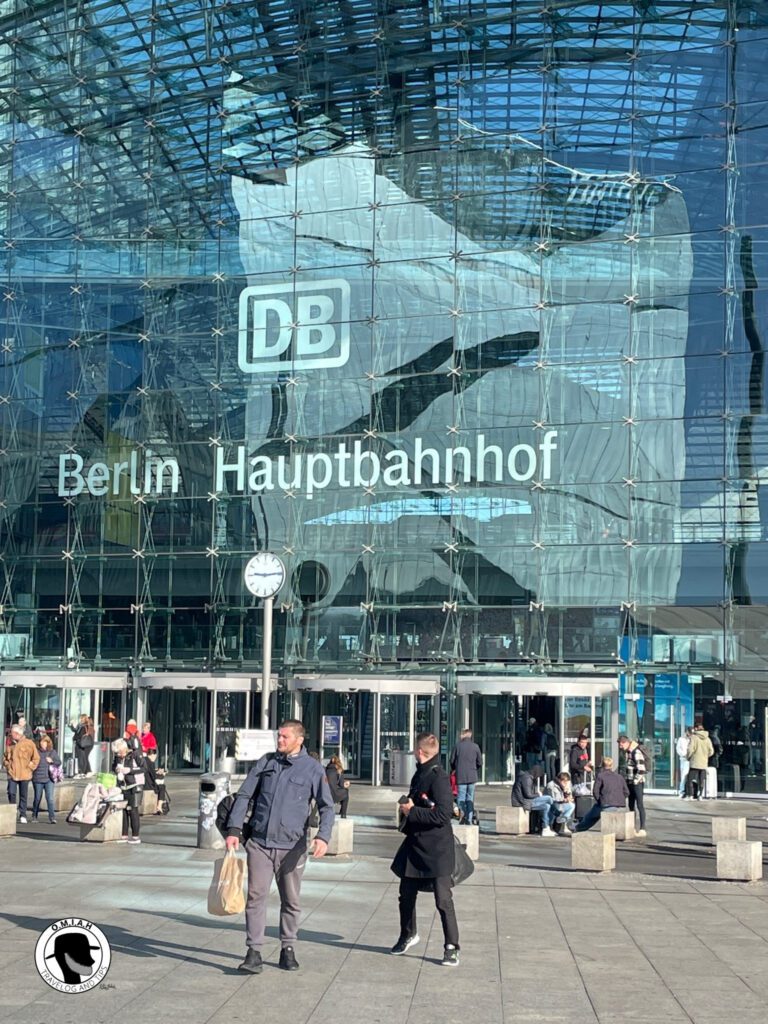
Getting around Berlin is incredibly easy. It has a large network of subways, street cars and buses. The city itself is on very flat topography, so walking is convenient. There are also companies that rent bicycles, allowing you to enjoy the miles and miles of bike paths and bike lanes throughout the city. There are also the options of taxis and car services, such as Uber.
Some things to see.
On this visit to Berlin, we stayed at the Hiton Berlin on Mohernstrasse. This was a nice hotel, but the sales point for us was the location. This hotel is located directly behind the Deutscher Dom on the Gendamenmarkt and is an easy walk to almost all the sights in the city center.
Since I brought it up. The Gendamenmarkt is a central square that got its name from the “Gens d’armes” regiment, whose stables were demolished by Friedrich II on the site. The large public square is bookended by the Deutscher (German) Dom on one end, and the Französicher (French) Dom on the other, with the Konzerthaus Berlin in the middle.
Its interesting. Despite being referenced as “dom”, which means cathedral in German, these buildings are not cathedrals. Rather their primary purpose is as museums. The Deutscher Dom houses an exhibition on German parliamentary history and the Französischer Dom houses the Huguenot Museum.
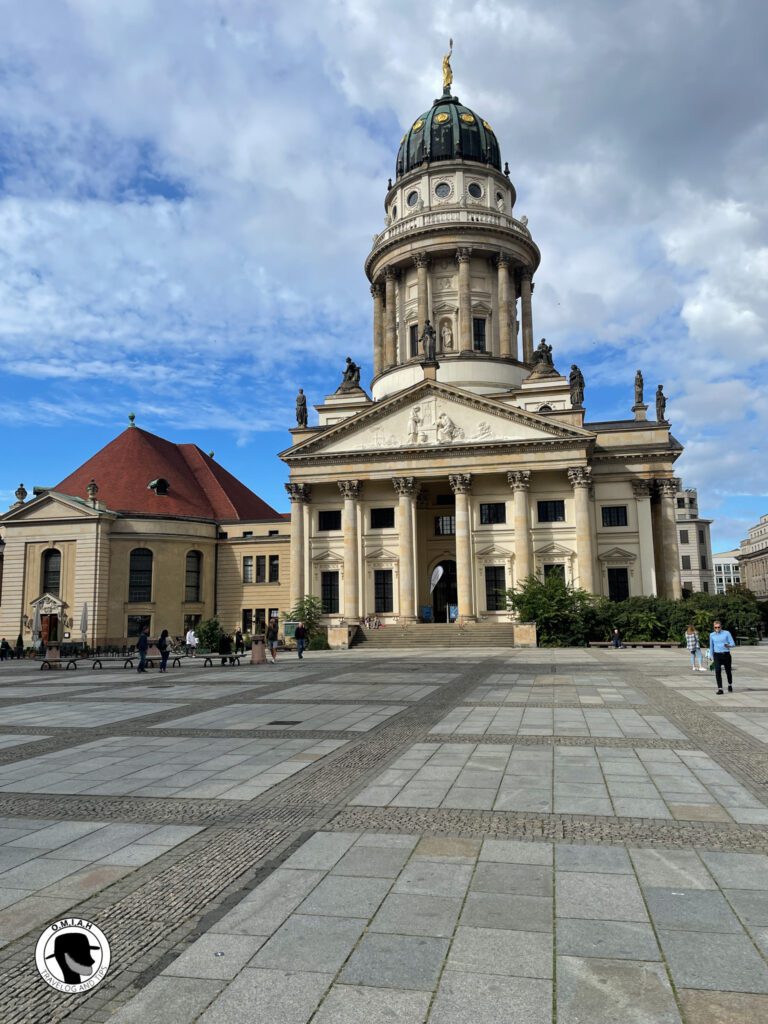

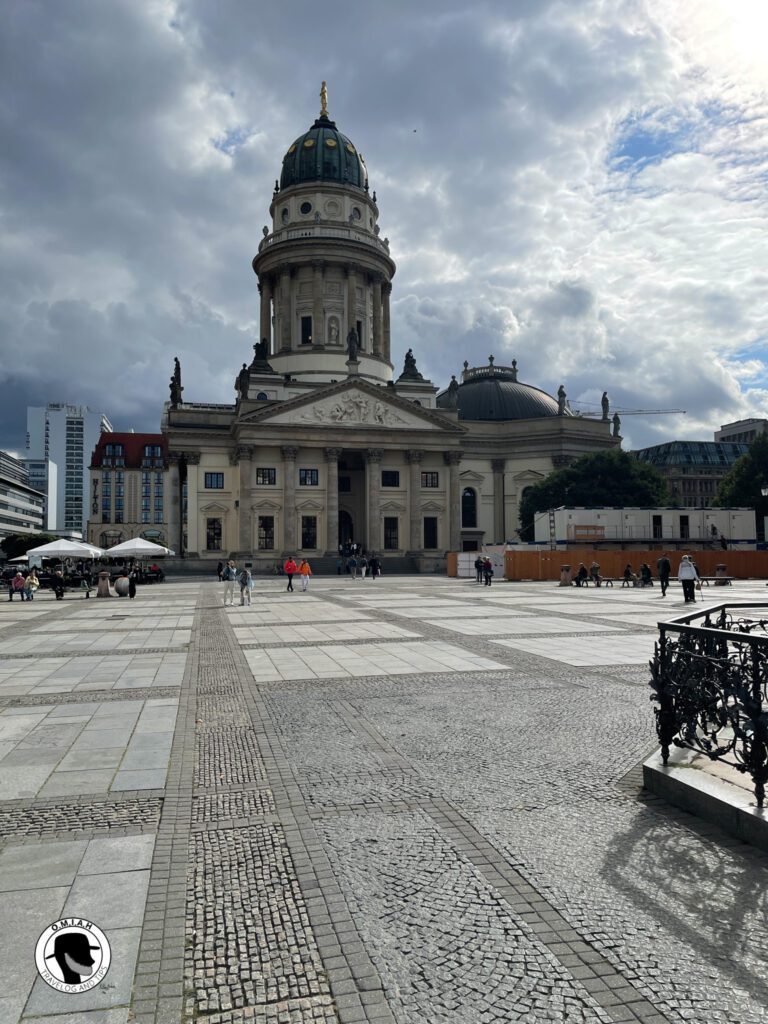
Brandenburg Gate is located about a mile from the Gendamenmarkt. The Brandenburg gate is often regarded as the symbol of city. The gate as built between 1788 and 1791 on the order of King Frederick William II of Prussia. The gate marks the beginning go the road from Berlin to Brandenburg. Brandenburg was the capital of the Margraviate of Brandenburg at the time. A Margraviate was a region of the Holy Roman Empire ruled by a Prince given the hereditary title of a Margrave. You can thank me for this tidbit of information if you ever get that as a Trivial Pursuit, or Jeopardy question.
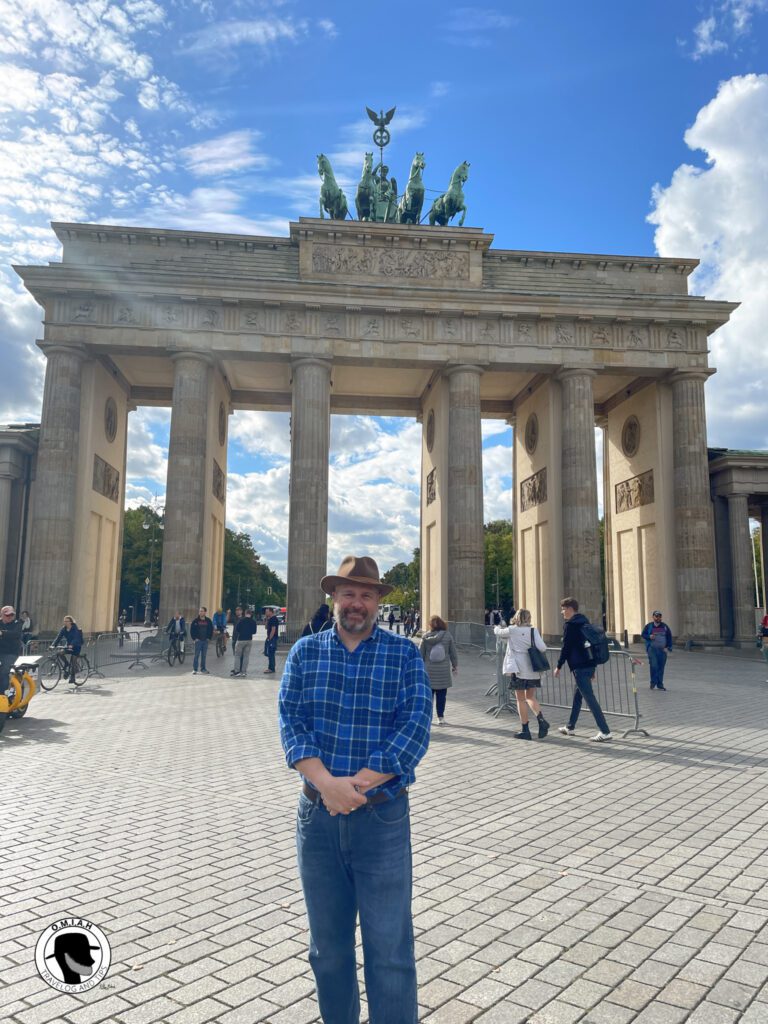
Beyond the Brandenburg Gate is the Tiergarten, aligning the Strasse des 17 Juli. This is such a wonderful green space in the center of the city for taking a jog or just a casual stroll to get away from the hustle of the city.
The Memorial to the Murdered Jews of Europe was inaugurated on May 10, 2005. The memorial took 10 months to construct at a cost of 25 million Euros. The attached building of information contains the name of ~3 million Jews killed during the holocaust.
I want to respect the solemn nature of the memorial, so I won’t be posting any pictures…just doesn’t feel right to put it in a travel blog. If you would like more information, please visit the following link.
www.visitberlin.de/en/memorial-murdered-jews-europe
Ironically, a block from the memorial is the site of the Führer’s bunker. Located at the corner of Hannah-Arendt Strasse and Gertrud-Kolmar Strasse is a sign marking the entrance to the bunker where Hitler took his life.
On the eastern side of the city center is Museum Island, built on an island in the river Spree. The complex was ordered for construction during the years 1830 – 1930 by the Prussian kings. The Museum Island was named a UNESCO World Heritage site in 1999. The complex consists of the following 6 exhibition houses.
- Altes Museum – Built in 1830
- Neues Museum – Finished in 1859. Also known as the Egyptian Museum of Berlin. Key artifact is the bust of Nefertiti
- Altes National Galerie – Finished in 1876 houses and art gallery featuring 19th century collection
- Bode Museum (dedicated to Patrick Swayze’s character in Point Break…just kidding that was Bodie). Opened in 1904, this museum houses a collection of Byzantine art
- Pergamon Museum – Constructed in 1939. The museum houses many reconstructed buildings. Noteworthy items in the museum are the Pergamon Alter, for which the museum is named, and the Ishtar Altar. (And no, its not an alter at which you worship the Warren Beatty movie of the same name (Ishtar)…which was awful).
- Humboldt Forum – located in the Berlin palace it opened in 2020 and houses the Ethnological Museum of Berlin and the Museum of Asian Art
One could spend several days on the island. However, on this trip we visited the Neues Museum

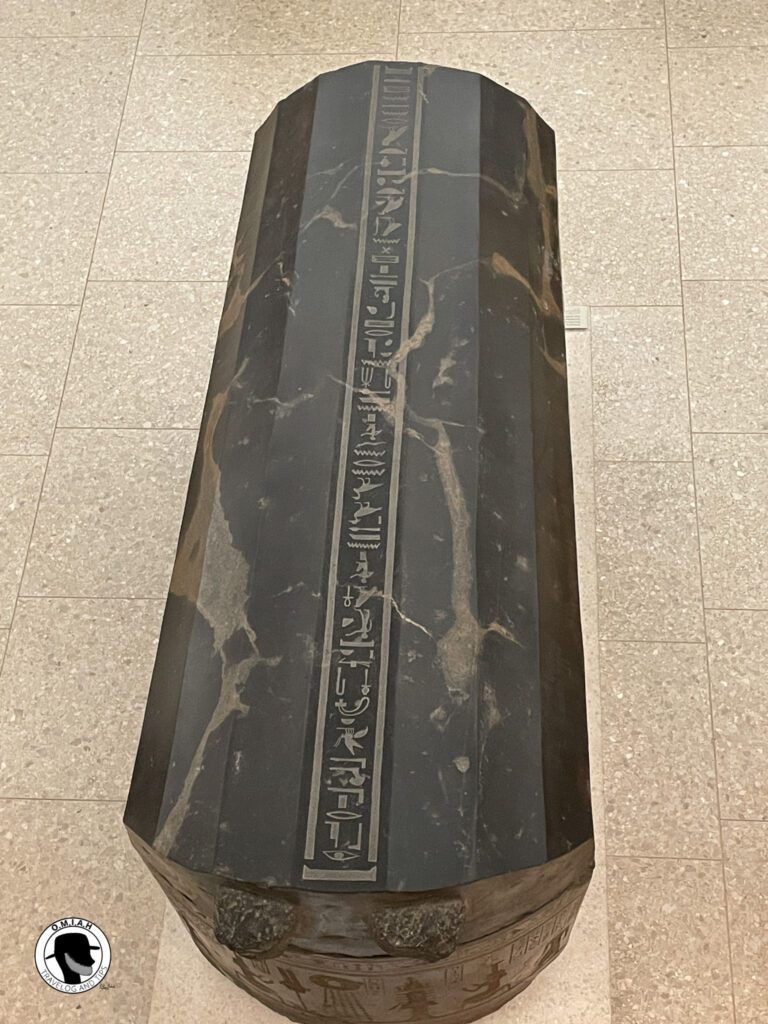
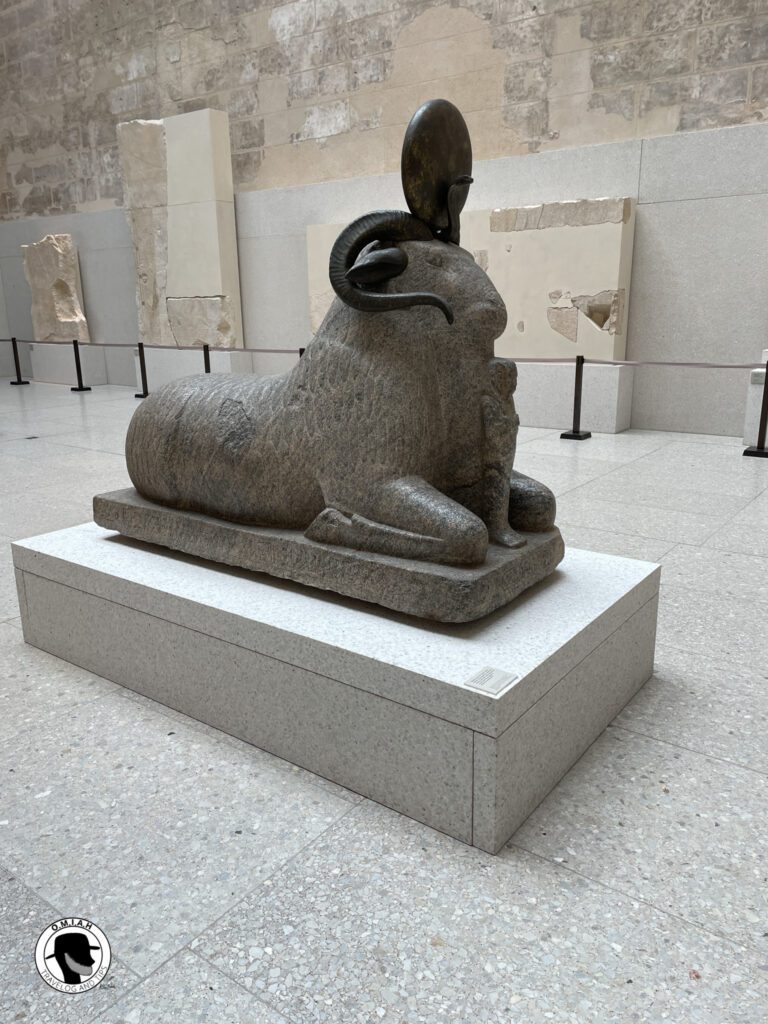
and the Pergamon Museum
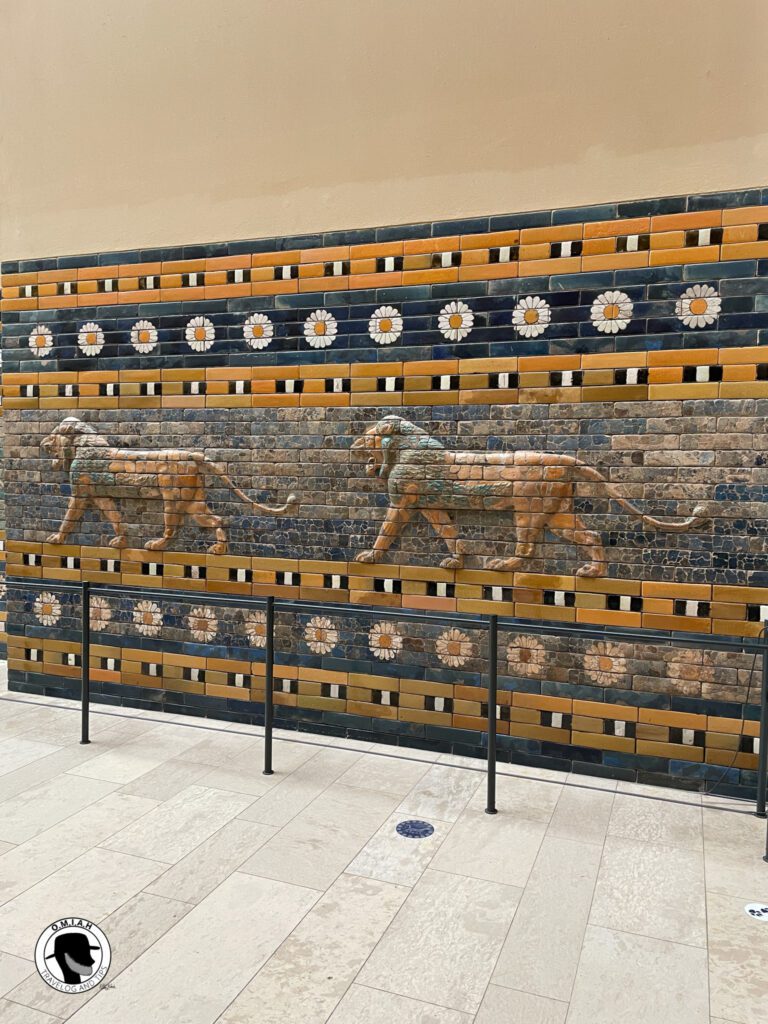
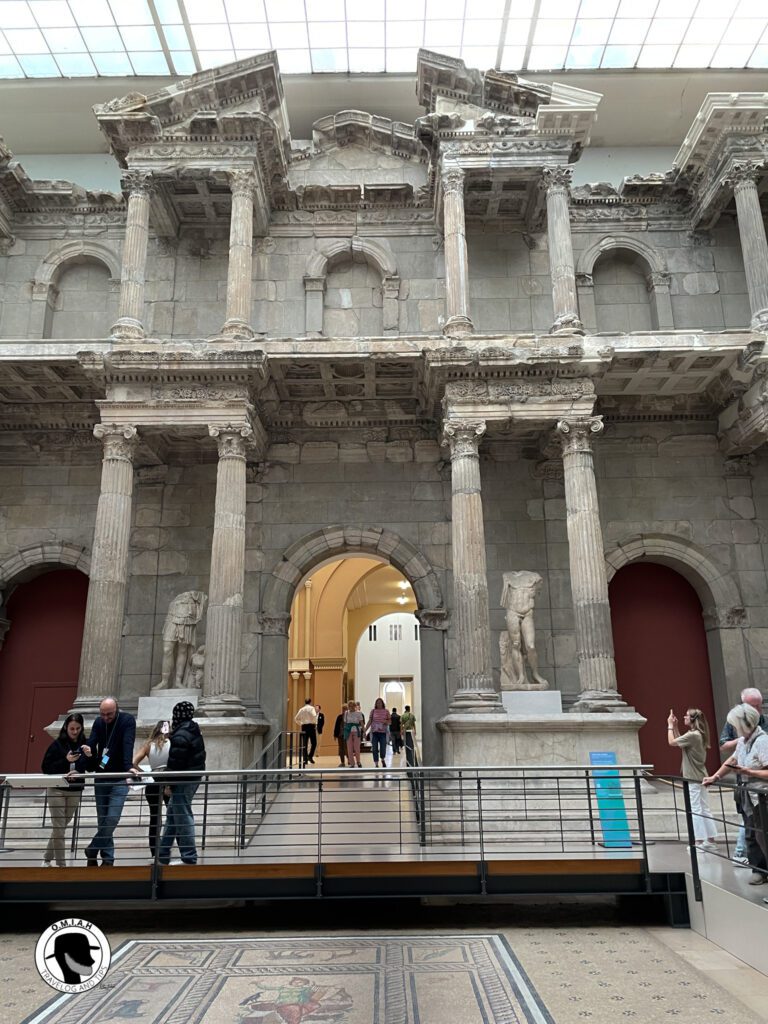
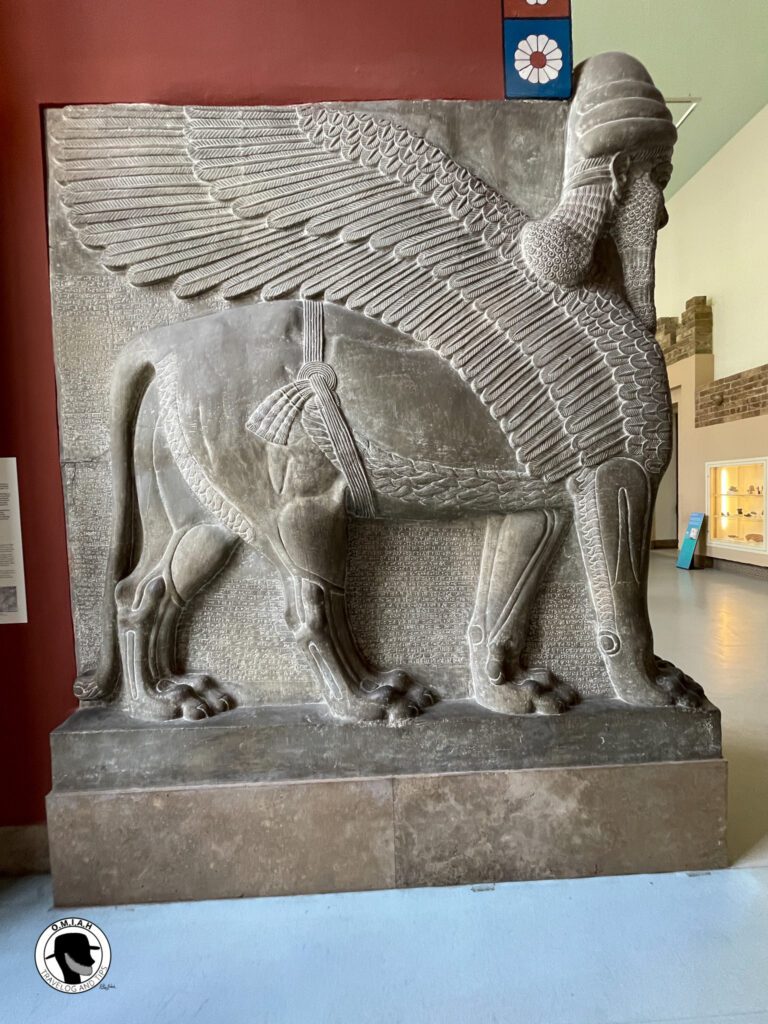
Also located on the Museum island is the Berlin Cathedral. This Evangelical Cathedral is located on the Lustgarten on Museum Island. Since it’s establishment, it has been a house of worship for Catholic, Lutheran, reformed and now listed as a United church. The cathedral was consecrated in 1454 as the Roman Catholic St. Erasmus Chapel. The Cathedral holds the royal tomb of the Hohenzollern dynasty.
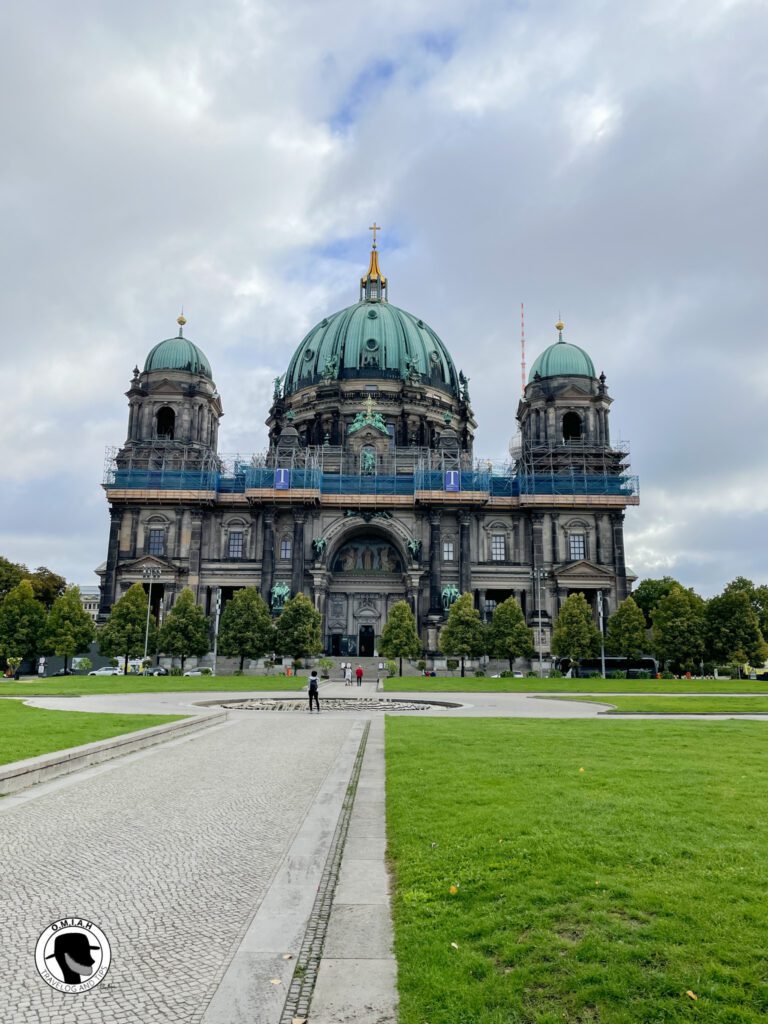
If you be-bop over the river Spree, you come to the heart of what used to be East Berlin.
Alexander Platz. This large square in the Mitte of Berlin was named by King Wilhem Fredrick III after the Russian Tsar, Alexander the Great, to commemorate his visit to the city. When the city was divided, this square was the gem of the DDR. It was used as a showcase to display their modern sophistication. Today, Alexander Platz and the surrounding area is built up with shops, hotels and restaurants but in the square, you can still find the benchmark investments of the East German government.
TV Tower – 368-meter-tall TV tower with restaurant and viewing platform at the 208-meter level. On a clear day you can see 26 miles away. Ironically built to show the technological sophistication of the east, where religion was tamped down. When the sun hit the windows, the reflection formed a cross.
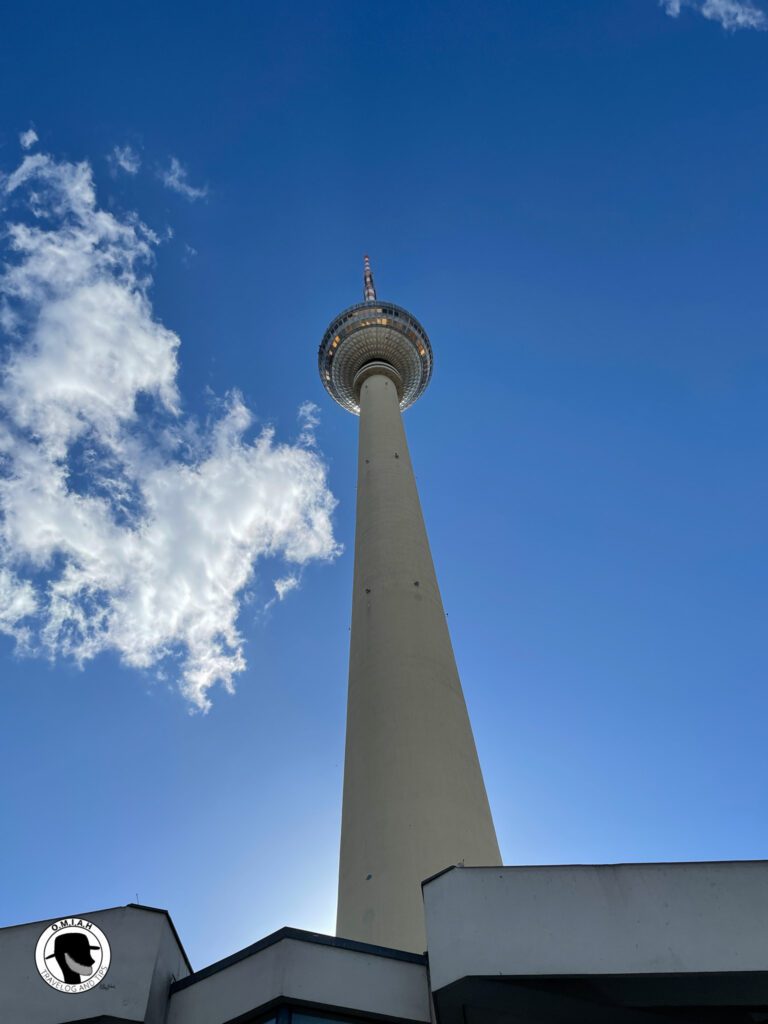
Urania World Clock – 16-ton clock built in 1969 where the time of 148 major cities is indicated on the spherical body. Truly a functional sculpture.
Rotes Rathaus. This building was originally built in in the 1860’s. It was badly bombed during WWII, but rebuilt to the original design. During the Soviet era, the building housed the offices of the East Berlin Mayor. Today, it is used as the office of the Mayor of the unified city of Berlin and the city administrative offices.
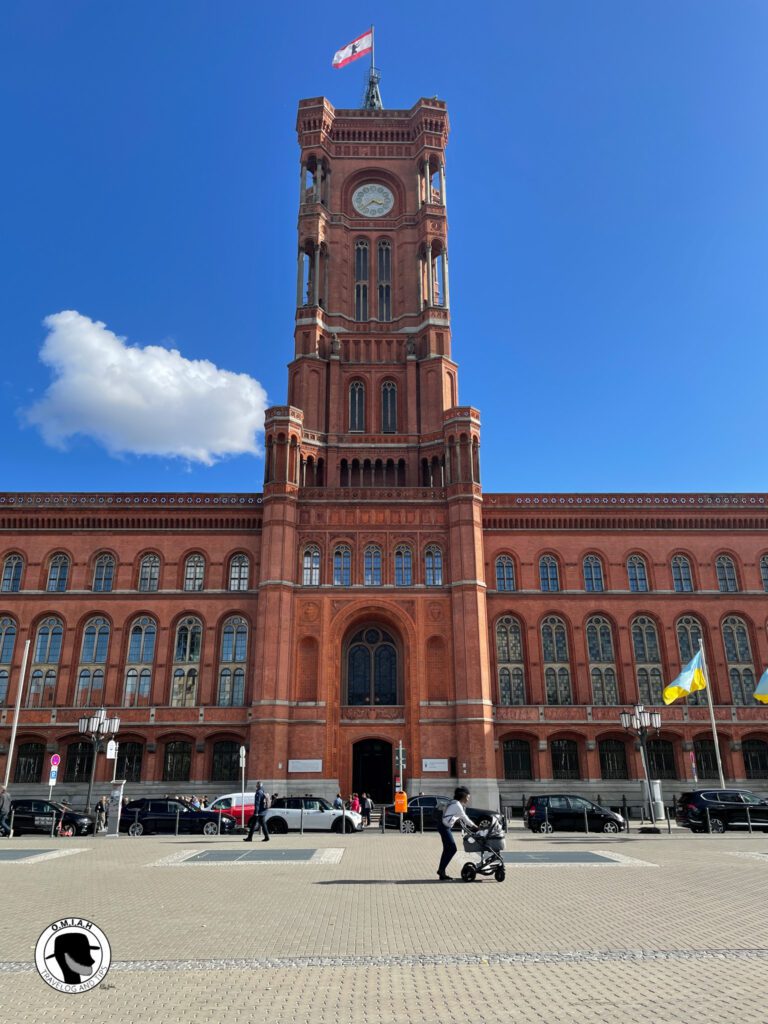
Potsdamer Platz
As we move to the south-west of the city center, we hit Potsdamer Platz. This square has had its ebbs and flows over the decades. It was pretty much destroyed during WWII but saw a rebound during the cold war until the uprising in East Germany resulted in the wall being built in 1961. This effectively split the square in half. Most buildings were torn down to create a no-man’s land between the walls that separated east and west Berlin.
After the wall fell, a significant re-building effort occurred with billions of dollars of investment being made by companies such as Daimler-Benz, Sony and ABB Group.
In the surrounding neighborhoods around Potsdamer Platz there are several museums and exhibition sites dedicated to Berlin’s history.
The Berlin Wall remnants exist along the Potsdamer Platz as well as brick inlays in the street to show the wall’s location.
Topography of Terror is a permanent exhibition built on the location of the main offices of Gestapo, SS and Reich Security. The exhibits on this site portray the history of these institutions, and the crimes that were organized by the Nazis. At five locations, photographs and documents illustrate the history from the time the Nazis took power until the end of the war.
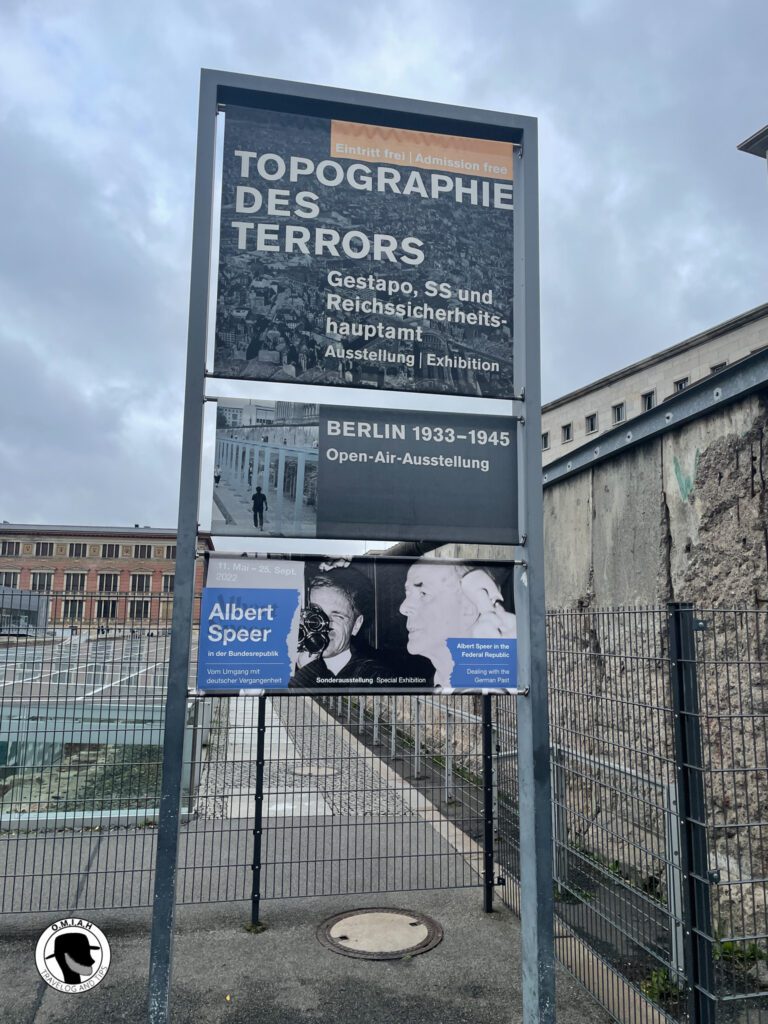
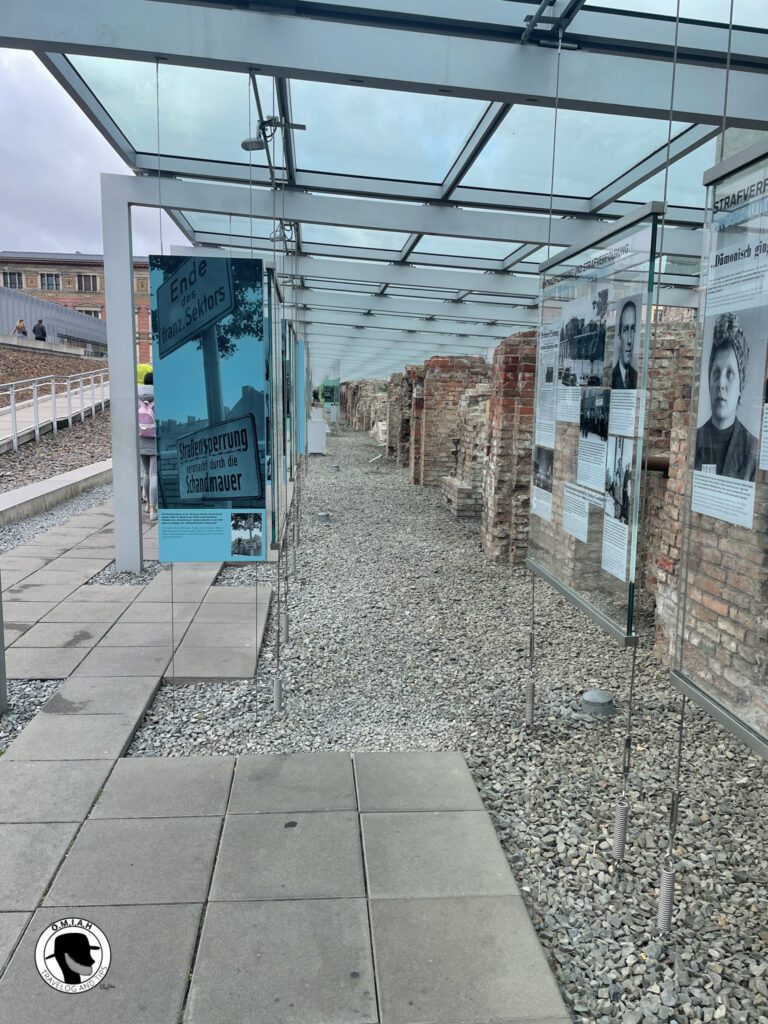
Checkpoint Charlie is rather touristy spot, but is emblematic of the cold war, as this was crossing between the east and west. It has been used in MANY movies portraying events during the cold war in Berlin
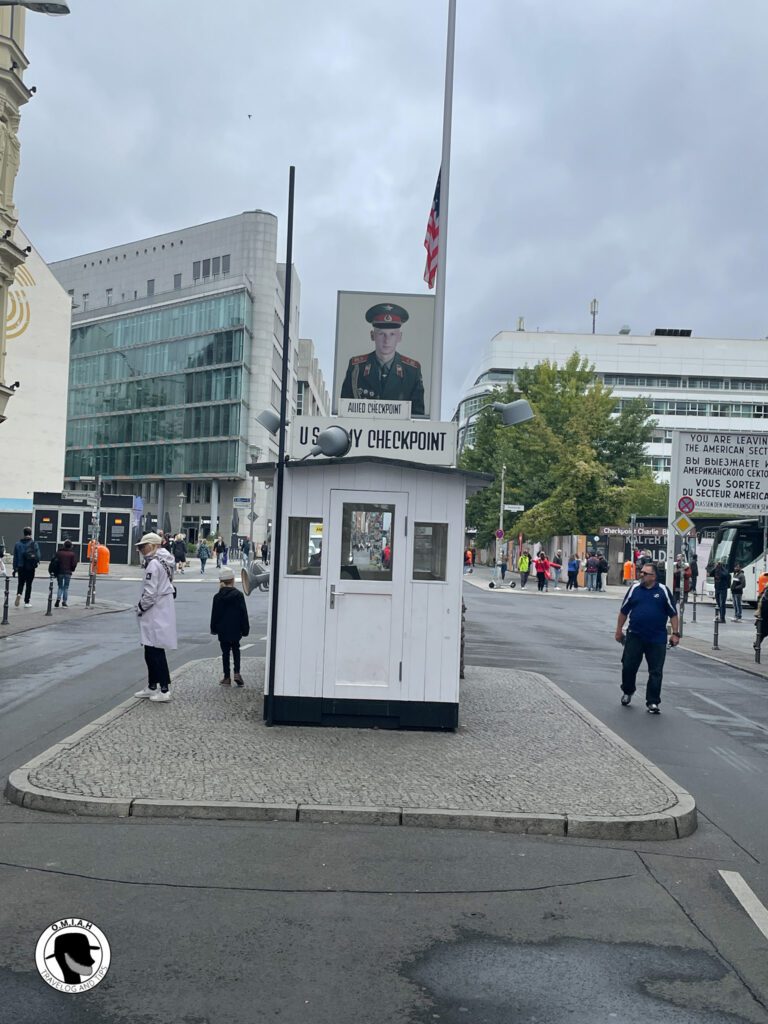
Random tip: When travelling to foreign cities, folks always look for the tourist sites. Don’t stop there!! Take the time to search the city websites to see what else is happening. There are always exhibitions, festivals, theatrical performances, concerts, etc. going on. Remember that locals like to do stuff too!! Do some research to see what’s happening. You might just get lucky and find something to keep you from just hanging out in the hotel, rinsing out socks and watching CNN International. Which brings me to:
Tempodrom Berlin. This is an interesting concert venue about a 15-minute walk from Potsdamer Platz. The inside of the structure looks like you are under a tent. On our trip, we were able to catch the British Ska band Madness in concert. A blast from the past as their hey-day was in the 80’s and 90’s. They put on a hell of a show.
Chalottenburg
Often referred to as the third city center of Berlin, the Kurfürstendamm is another great area to visit in the Charlottenburg neighborhood. The street was named after the Prince Electors of Brandenburg and is lined with restaurants, high-end luxury stores and clubs. Ku’Damm is often referred to as the Champs Elysees of Berlin.
Located just south of the Ku’Damm station is the Berlin Tiergarten. It is the is the oldest zoo in Germany and opened in 1844. Currently holds over 20,000 animals representing ~1380 species.
Another key attraction along the Ku’Damm is the Keiser Wilhelm Memorial Church – aka The Hollow tooth. This church, built in the 1890s, was fundamentally destroyed in bombings during 1943. The burned out spire was all that was left of the original church. The spire stands next to the church built on the site and consecrated in 1961. The mosaics in the ruined church spire are quite spectacular.

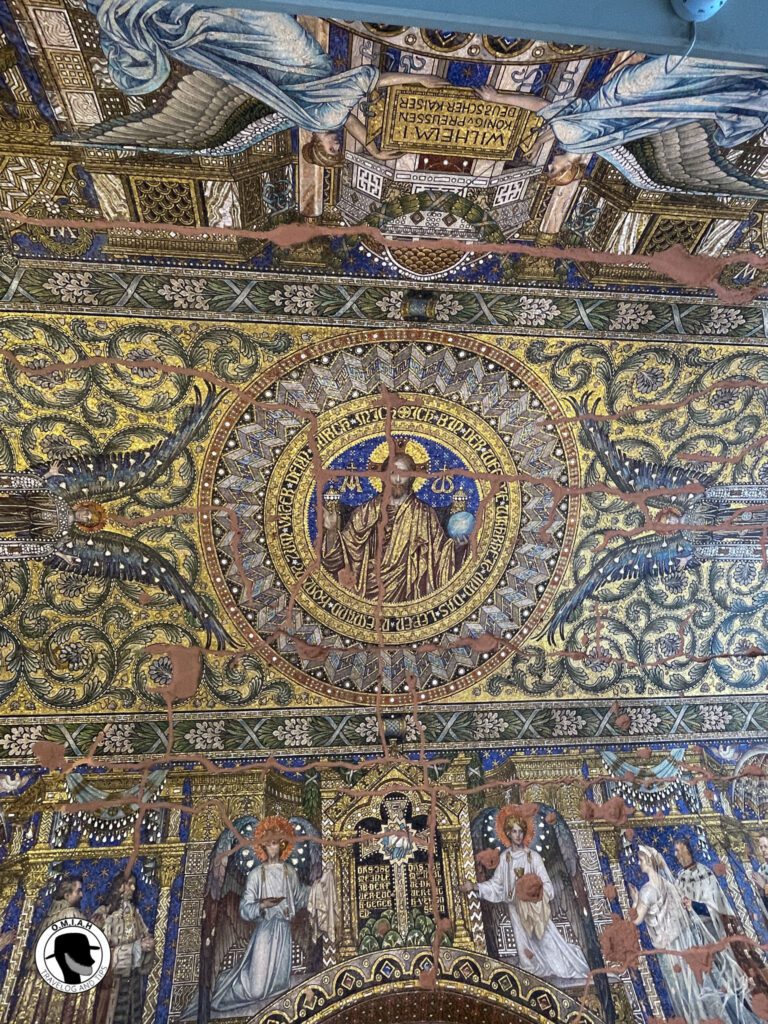
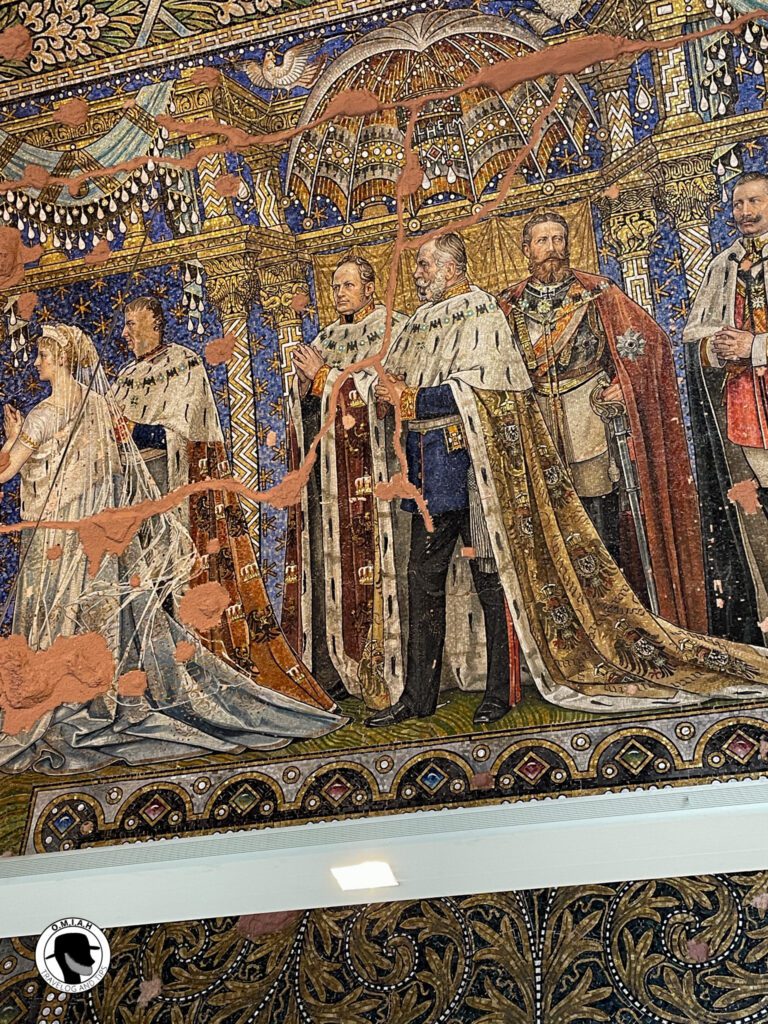
Ran out of time
On this visit to Berlin, we only spent 3 days. We kept a full calendar but didn’t come close to exhausting what the city had to offer. Here are some of the things we didn’t get to that might be of interest for you on your visit to Berlin.
- Charlottenburg Palace
- Day trip to Potsdam and the palace Sanssouci
- Berlin’s night club scene
Until next time!
Travel Well. Pursue experiences
O.M.I.A.H.
